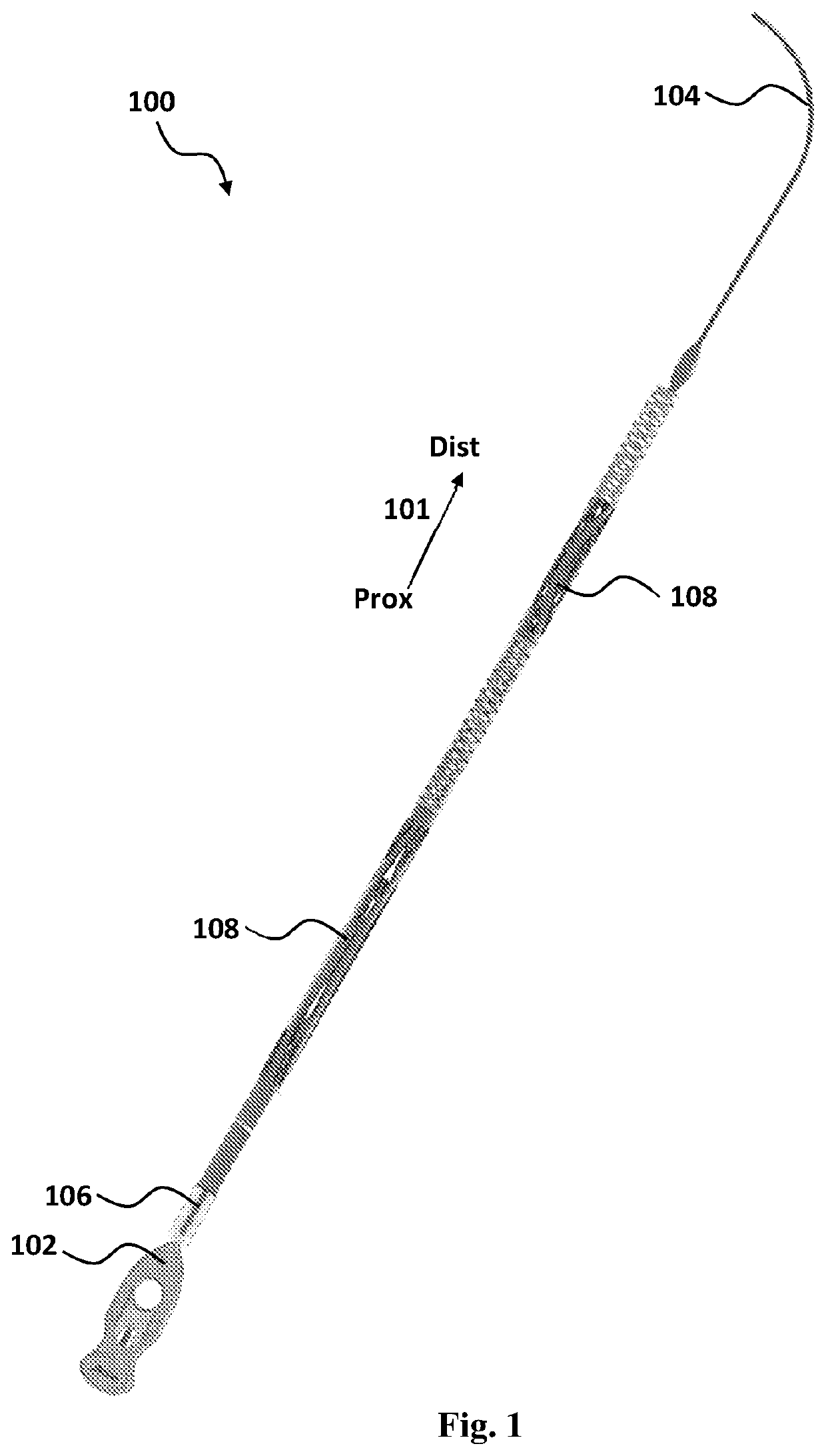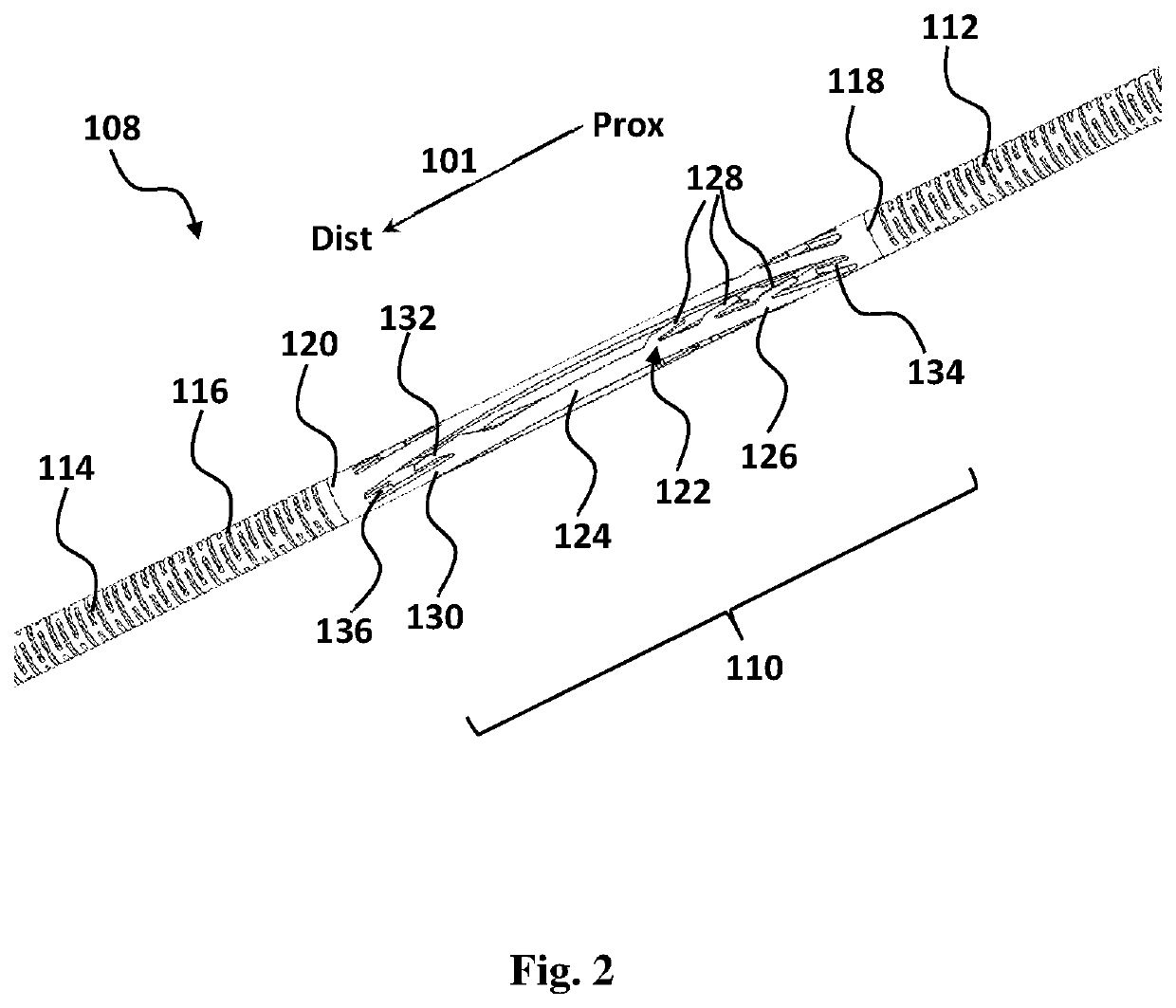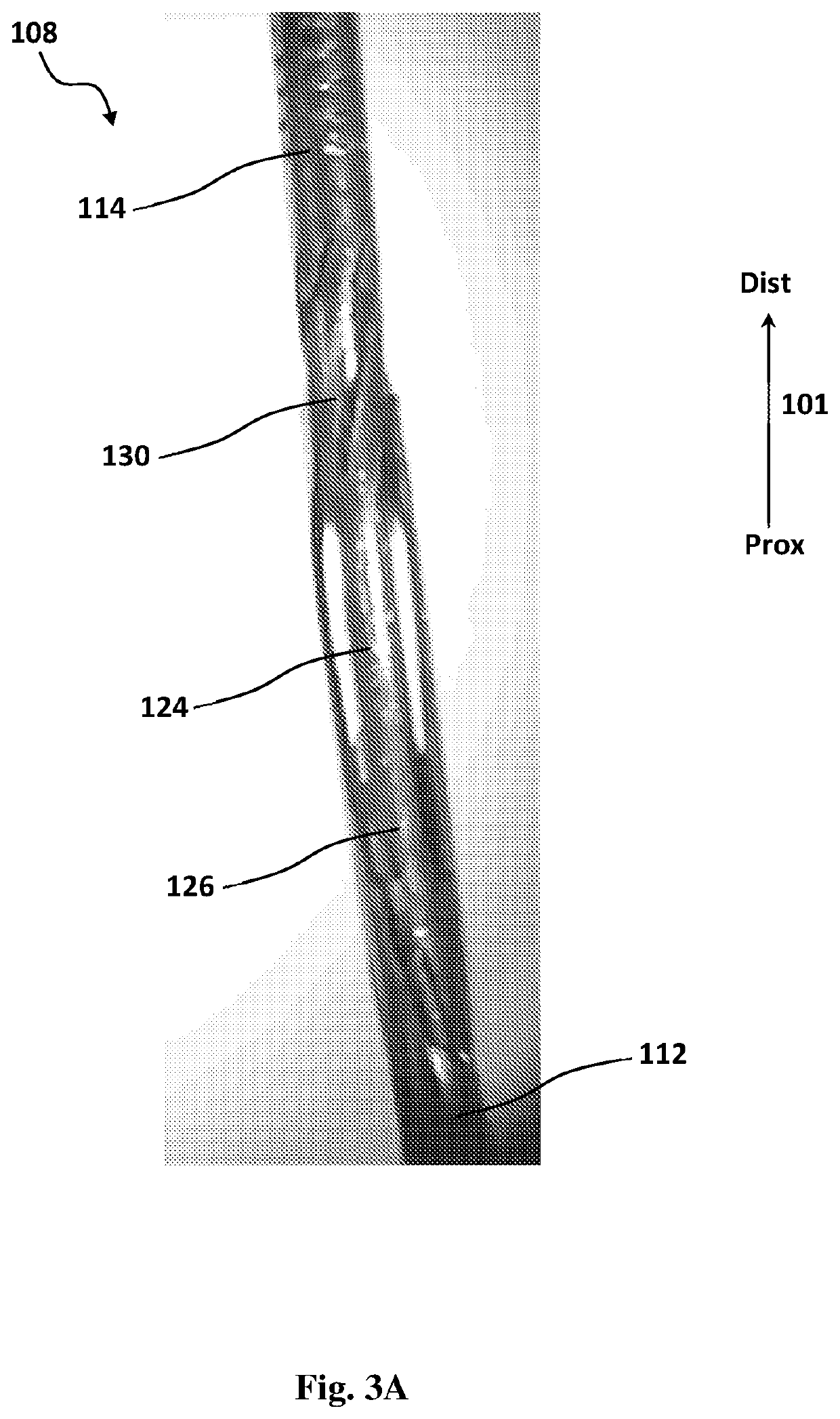Devices for the removal of clots
a technology of clot removal and clot removal, which is applied in the field of anchoring and retrieval of corpus, can solve the problems of threatening functionally, stroke is one of the most costly health problems, and sudden death of brain cells
- Summary
- Abstract
- Description
- Claims
- Application Information
AI Technical Summary
Benefits of technology
Problems solved by technology
Method used
Image
Examples
Embodiment Construction
[0099]As described above, the system of this disclosure includes a handling and manipulation apparatus (HMA) and a device operable thereby. The device is typically inserted into the vessel to be treated in a non-deformed (non-deployed) state via a pre-inserted catheter or micro-catheter. Once reaching the corpus to be extracted, the corpus capturing unit is deformed (deployed) for capturing and anchoring into the corpus, to enable its extraction from the vessel.
[0100]A device 100, shown in FIG. 1, is a generally elongated device extending in a generally proximal to distal direction (noted by arrow 101), from handling and manipulation apparatus 102 to a distal end 104. The device includes guidewire 106, a plurality of capturing units 108, each enveloping a distal portion of the guidewire. It should be noted that in other embodiments, the capturing unit can extend to envelop the guidewire substantially along its entire length. It is also of note that the HMA may have various designs (...
PUM
 Login to View More
Login to View More Abstract
Description
Claims
Application Information
 Login to View More
Login to View More - R&D
- Intellectual Property
- Life Sciences
- Materials
- Tech Scout
- Unparalleled Data Quality
- Higher Quality Content
- 60% Fewer Hallucinations
Browse by: Latest US Patents, China's latest patents, Technical Efficacy Thesaurus, Application Domain, Technology Topic, Popular Technical Reports.
© 2025 PatSnap. All rights reserved.Legal|Privacy policy|Modern Slavery Act Transparency Statement|Sitemap|About US| Contact US: help@patsnap.com



